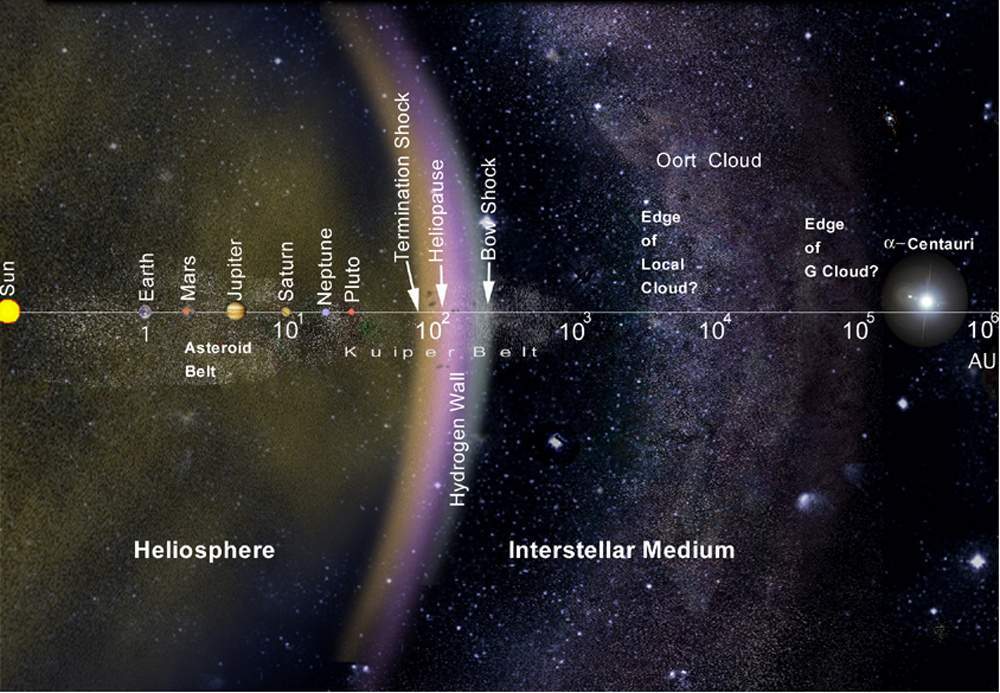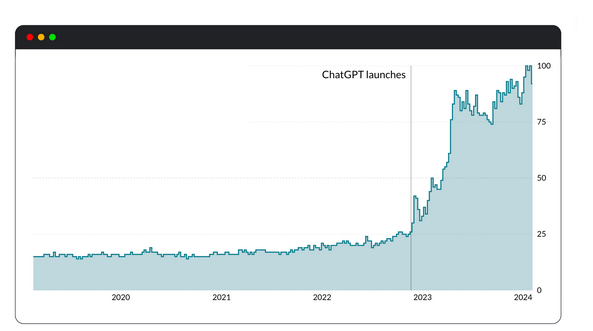Misinformation and Disinformation in AI

Deliberate, wilful disinformation and unwitting misinformation in AI live, fester and perpetuate themselves in the gaps in public understanding of these contentious new technologies.
Being intelligent or well informed is not the same as being wise. Wisdom begins with appreciating how little one knows and being humbled by the fact. Each of these articles by coders, database engineers and decision theorists falls short because they can’t resist the urge to pat themselves on the back for being so ‘smart’. The human urge to elevate parts of humankind to some level of demigodhood by creating something approximating ‘life’ is writ large in all the articles on AI. They can’t admit that Frankenstein’s monster is fictional and beyond their ability. They have to hold out hope that they will be the ones to ‘crack it’.
However, in my view, they never will.
True sentience, intellect and abstract imagination are unique to organic life. It requires an understanding in philosophy, biology, neurology, chemistry and physics that is rare in the tech community to appreciate the true scale of the challenge of creating anything remotely resembling thinking, reasoning, imaginative, creative, sensate ‘life’.
Just as the alchemists of ancient times all failed to turn base metals into gold, research biologists with access to every atom, molecule, cell, element, chemical and substance known to modern science have been unable to create lab born life from base elemental components or basic chemical compounds.
It seems, to me, that no amount of processing power will ever deliver it.
Supercalculation is not intelligence. Artificial neural networks are not truly neural. Using raw materials and building blocks that already exist to make something is not creation. Creation starts with nothing, which is Imponderable. Neural consciousness and sentience too are imponderable. Unless our understanding of hard sciences stands on its head some day, neither consciousness or sentience will ever be achieved by mere computation or processing power.

Investment in manned extra-solar or extra-galactic travel is futile, at the current state of scientific knowledge. In contrast, manned low earth orbit and intrasolar travel are not only doable and might yield benefits in terms of finding sources of scarce resources and off-planet building, positioning, servicing and de-commissioning of outdated, malfunctioning or redundant telecommunication satellites, in more eco-efficient and responsible ways.
Understanding the distinctions between the two help solidify my belief that I’m as unlikely as ever to see an extraterrestrial or one of our spacecraft reach another solar system, within what remains of my lifetime.
Similarly, truly intelligent machines remain an unobtainable objective, with our current state of scientific knowledge. Free-ranging, untethered robots and widespread drone deliveries will continue to remain impractical at this state of our civilisation.
Pseudo-intelligent machines with limited remits can, are and will continue to push the boundaries of productivity, as tools to enables us to discover more, see more, achieve more and do so at a faster rate.
We have no need to fear AI designed for and dedicated to specific tasks and developed in meaningful, responsible and constructive ways. Instead, we should embrace it, understand it and learn to leverage its benefits to our full advantage.
On autonomous vehicles, only in some sci-fi future with redesigned highways, towns and cities, where interactive sensors and transponders are embedded in each vehicle, every road, highway and in street and building infrastructure, could a degree of autonomous vehicle technology work.
Even then, whenever and wherever pedestrians intersect with EVs, there will remain a risk of casualties.
I also imagine that the conundrum of insurance liability in collisions between manned autonomous vehicles, with one another and with infrastructure, could well prove to be impossible to resolve, even if a body of law emerges to try to cover it. As with much else in life, the only winners will be the lawyers.
On unrestricted, creativity-mimicking AI, I believe the output will continue to be suboptimal and error-riddled.
Eventually, the wish of every anti-intellectual inadequate will come true. Everyone will be able to find links to seemingly authoritative content that gives them succour, no matter how stubbornly misinformed they are.
Generative chatbots can only produce results derived in some way from what has already gone before. Also, given that eliminating error, misapprehension, misperception, falsehood and inaccuracy from chatbot output will prove to be an impossible, Sisyphean task, a proliferation of generative chatbot applications will inevitably serve to dilute the accuracy, quality and value of information in the public domain overall.
This means, when self-referential chatbots inevitably start citing chatbot sources in their output, a reductive spiral of dilution in the value of public digital information will have been initiated that never needed to happen, had the application of machine learning algorithms been limited to precise, narrow, dedicated tasks.
The tendency to alight on short cuts among those with short termist outlooks, limited talents and minimal capabilities is self-harming. Look how much time, effort, keystrokes and electrons some seem willing to invest, in order to use chatbots to fabricate elaborate illusions of capability and competence … instead of redirecting the very same energies to acquiring the genuine skills they lack. Disinformation and misinformation in AI misdirect attention and obscure poublic understanding of the salient issues.
The most pressing issue is what is already happening with AI, in terms of hidden inequalities, bias in bank loan and mortgage approvals, job insecurity and wasted investment in vast, highly energy-consumptive, data centres with huge carbon footprints, devoted only to addressing frivolous tasks and solving trivial problems.
What’s been unveiled about the need for human enhancement of LLMs by post facto moderators is not that the code’s defective. The code does about the best that it can, given its impossible remit (to become a plain-speaking Digital Delphic Oracle).

No amount of training data could ever suffice to transform a dumb, insentient machine incapable of true learning into a being able to communicate with users as effortlessly and coherently as a mythical, omniscient human interlocutor would.
Perhaps a closer analogy would be say LLM output requires endless real-time human moderation before it’s anywhere close to being plausibly fit for end user consumption but still falls short … because the challenges (open-ended communication on any topic and provision of apt solutions to every query) are unassailable for either machines or the software they operate. No amount of disnformation or misinformation in AI will change the status quo.
It’s like trying to pretend a bicycle (with square wheels) will realistically ever become a viable means of transportaion, if only hidden, unaccredited humans would lay endless sheets of soft foam matting in the road ahead everywhere it goes, to soften the inevitable bumps.

In contrast, AI, of the non-generative variety, has a vast array of evident practical applications. We can already see it transforming healthcare, in remote precision surgery, hyper-accelerated scanning of x-rays for anomalies; the application of rapid pattern recognition in the parsing of vast healthcare datasets, to spot otherwise hidden hotspots for certain conditions or healthcare needs.
These functions rely solely on precise computation, something to which hardware and software working in harmony are ideally suited.
MSB
February 24th 2024
■ Remarks the Impact of Disinformation & Misinformation in AI
Disinformation & Misinformation in AI
M. S. Tafawa Balewa
Published Online: March 23, 2019
https://disabilitymatters.co.uk/disinformation-misinformation-12821530202123-26-02-24/51593-24-02-24/
■ Remarks on Neural Networks in Memory & Cognition
Organic Neural Net versus Artificial Neural Net:
The Role of Event Boundaries in the Disruption of Related Sequential Actions
M. S. Tafawa Balewa
Published Online: February 24, 2024
https://disabilitymatters.co.uk/neuralnetworks-128251593-24-02-24/
■ What is Neurocybernetics?
Dave Andre
Published Online: January 8, 2024
https://www.allaboutai.com/uk/ai-glossary/neurocybernetics/
■ Introduction to Neurocybernetics
Massachusetts Institute of Technology, Cambridge, Mass. (U.S.A.)
Netherlands Central Institute for Brain Research, Amsterdam (The Netherlands)
N. Wiener; J. P. Schadé
Published Online: February 29, 2008
https://www.sciencedirect.com/science/article/abs/pii/S0079612308620555
■ Neurocybernetics and Rehabilitation
Neuromodulation and Neurocybernetics:
Translational Cognitive Neuroscience
Online Research Resource
https://www.neurocybernetics.net
■ Neurocybernetics: Contents and Problems
O.G. Chorayan
Department of Physiology
Neurocybernetics Research Institute
State University
Rostov‐on‐Don, Russia
Published Online: 1 July 2000
https://www.emerald.com/insight/content/doi/10.1108/03684920010333224/full/html
■ Remarks on Neurocybernetics and its Links to Computer Science
In memory of Prof. Luigi M. Ricciardi
Roberto Moreno-Díaz; Arminda Moreno-Díaz
Instituto Universitario de Ciencias y Tecnologías Cibernéticas, Parque Científico-Tecnológico, Universidad de Las Palmas de Gran Canaria, 35017 Las Palmas de G.C., Spain,
Institute of Sciences and Cybernetic Technology, Science & Technology Park, University of Las Palmas (Gran Canaria), Las Palmas 35017, Gran Canaria, Spain
Published Online: November 3, 2012
Elsevier Biosytems
Volume 2, 1963, Pages 1-7
https://www.researchgate.net/publication/234122675_Remarks_on_Neurocybernetics_and_its_links_to_Computing_Science_To_the_Memory_of_Prof_Luigi_M_Ricciardi
■ Homeostatic Systems, Biocybernetics, and Autonomic Neuroscience
Published Online: September 5, 2017
David S. Goldstein, MD PhD; Irwin J. Kopin, MD
https://www.ncbi.nlm.nih.gov/pmc/articles/PMC5819891/
■ Maturation of the Adolescent Brain
Mariam Arain; Maliha Haquel; Lina Johal; Puja Mathur; Wynand Nel; Afsha Rais; Ranbir Sandhu; Sushil Sharma
Published Online: 03 Apr 2013 | Pages 449-461
https://www.tandfonline.com/doi/full/10.2147/NDT.S39776
■ Anticipation in Neurocybernetics
Slawomir J. Nasuto; Yoshikatsu Hayashi
Published Online: 02 August 2019
https://link.springer.com/referenceworkentry/10.1007/978-3-319-91554-8_61
■ The Implantable Neurocybernetic Prosthesis System
National Library of Medicine
National Center for Biotechnology Information
U.S. Department of Health and Human Services
R. S. Terry; W. B. Tarver; J. Zabara
Published: January 14, 1991
PubMed
Pages: 86-93
https://pubmed.ncbi.nlm.nih.gov/1705341/
